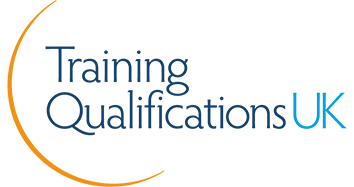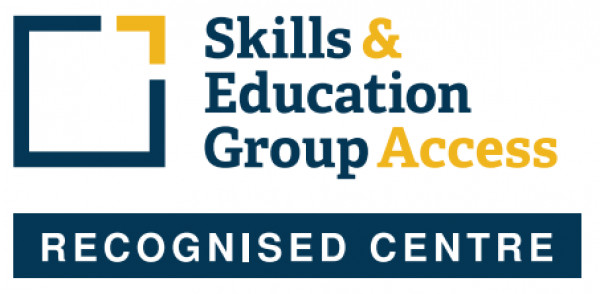Business Management
 97.5%
97.5%
- SALE Savings End Midnight Tuesday 23rd December
- SALE Savings End Midnight Tuesday 23rd December
Business Management
Business Management can be defined as the process of leading and directing all or part of an organisation, through the deployment and manipulation of resources (human, financial, material, intellectual or intangible).
Managers must also measure the performance of the organisation on a regular basis, review business strategies and plans, and ensure the appropriate actions are taken to meet the organisation's goals.
About Business Management Course
Management and Leadership are vital to organisational success in today's challenging global environment. It is the role of management to conceive and initiate strategies that create and sustain competitive differentiation and advantage.
This Business Management course has been designed to take you through the key concepts that underpin good management and ensure that you have the requisite knowledge to promote organisational success.
Unit 1 - Managing and Leadership
'Management is a practice rather than a science.' This is somewhat self-evident, but to try to make rules for successful management, in the same way as a chemical process, ignores the main element of variability -- namely the people involved. The activities and the role of a manager will vary depending on the organisation and its culture. In this unit you will review the key characteristics of management and leadership whilst looking at the range of styles of management that are employed in the modern day workplace.
By the end of this unit you will be able to:
- Describe the key differences between management and leadership
- Describe the main components of the role of manager
- Identify the main components of the role of leader
- Discuss a range of management styles.
Unit 2 - Performance at Work
In assessing training needs, you need to take into account both the needs of the organisation as well as the aspirations of the individual. Training solutions include custom-built courses, external courses, open learning, education programmes, secondment, coaching, on-the-job instruction and computer-based training. In evaluating training, senior management must consider internal measures (whether the training achieved the specified learning objectives), external measures (whether the training resulted in improved performance at work), and its general cost effectiveness (whether it added value to the company or organisation). These are some of the factors you will consider throughout this unit.
By the end of this unit you will be able to:
- Describe ways of identifying training needs
- Recognise potential solutions to identified training needs
- Describe methods for monitoring training
- Identify methods for reviewing the performance of individuals
- Understand discipline and grievance procedures
- Describe strategies to support employees in improving their performance.
Unit 3 - Working, Planning and Organisation
Many businesses operate a traditional strategy in their approach to planning, mainly because their activities are relatively predictable and regular. With an agreed strategy, a detailed plan can be produced with short, medium and long-term goals, with details of what has to happen, who is involved, when it should happen, how it should happen, where it should happen, and why. In this unit, you will examine a number of tools and approaches which can be used to plan business activities, develop organisational strategies and analyse work tasks.
By the end of this unit you will be able to:
- Recognise and describe strategies and plans
- Recognise planning tools
- Describe effectiveness and efficiency methods
- Identify and use organisational analysis techniques
- Recognise and understand method study
- Recognise and understand process charts
Unit 4 - Motivating the Workforce
Delivering a good performance at work has been shown to be a function of ability, experience, reward and, above all, motivation. We are purposive beings and we continually select goals which are important to us and seek to achieve them. It is this goal-directed activity we call motivation. Given the importance of employees as an organisational resource, it is obviously crucial that managers should understand the nature of motivation so that they can better manage those forces, both internal and external to individuals, that lead some to apply only minimal effort to their work tasks while others expend much greater effort and consequently are much more productive.
By the end of this unit you will be able to:
- Define motivation and explain the importance to managers of understanding it
- Explain how motivation theories are classified into content theories and process theories
- Explain Taylorism and its motivational implications
- Understand the motivational implications of the Hawthorne experiments
- Appreciate Maslow's hierarchy of needs and its motivational implications
- Explain Herzberg's two-factor theory and its motivational implications
- Describe expectancy theory and its motivational implications
- Understand equity theory and its motivational implications
Unit 5 - Human Resource Management
Human resource management (HRM) is regarded by Porter as one of the primary activities in an organisation. It is responsible for one of the key inputs of the transformation process and it is also involved in all other functions and activities as they all have a human element. HRM is concerned with all aspects of people management in organisations, from the initial contact through to termination of employment (and beyond in some cases). The management of people in organisations is becoming more widely recognised as a factor critical to organisational success (Storey, 1992, p. 46). The workforce can be regarded as an organisation's greatest asset and is crucial in achieving and sustaining competitive advantage.
In this unit, we consider the background to and philosophy of HRM and will concentrate on some of the tasks carried out that can influence the effectiveness of people within the work environment.
By the end of this unit you will be able to:
- Distinguish between the concepts of personnel management and HRM
- Describe Human Resource Planning
- Outline recruitment and selection processes and methods
- Describe the stages in the training cycle
- Explain the role of assessment and appraisal
- Outline the main factors in employer/employee relations and the role of unions
- Identify the value of HRM procedures that are grounded in a legislative framework
Unit 6 - Business Strategies
Every year in Britain thousands of new businesses are created. A few will grow to become global companies employing thousands of people, others will never make the world stage; in fact, the majority will cease trading within two or three years.
In this unit, we look at some of the tools that we can use to decide on the strategy. As you will see, the tools we describe are those which link the various functions of the business and are to do with operating the business as a complete organisation rather than as a collection of functions or departments. The business strategy concerns the overall direction of the organisation. Here, we consider the operational or functional strategies that contribute to the business strategy.
We start by looking at key issues involved in setting strategy and at a process for choosing the strategy.
By the end of this unit you will be able to:
- Explain how businesses need to align their objectives and capabilities with the needs of their customers and with the environment
- Define examples of business objectives, mission and value statements
- Understand how the business environment provides opportunities for the business but also limit its freedom of action
- Describe a range of business strategies and explain the circumstances in which they might be appropriate for a business
- Describe how an organisation copes with an uncertain future and responds to complex environmental change.
For a more detailed syllabus on this course, click here.
Modules
Assessment Method
After each lesson there will be a question paper, which needs to be completed and submitted to your personal tutor for marking. This method of continual assessment ensures that your personal tutor can consistently monitor your progress and provide you with assistance throughout the duration of the course.
Entry Requirements
There is no experience or previous qualifications required for enrolment on this course. It is available to all students, of all academic backgrounds.
*You will have access to the course for 12 months only.
On successful completion of your course you will receive the learndirect Certificate of Completion of Training in Business Management.
Your course certificate will also state the number of CPD points/hours the course is eligible for.
View a sample of the certificate (opens in new window)
learndirect is one of the largest integrated providers of courses and qualifications, training, and employment services in the UK
- Each year around 6,000 businesses equip their staff for success with learndirect
- learndirect have helped more than 75,000 businesses equip their employees with the skills needed to improve productivity.
- Almost 700,000 maths and English test passes have been achieved with learndirect.
- 300,000 people fulfilled their career ambitions last year with learndirect.
- Over 250,000 apprentices have achieved with learndirect.
- SALE Savings End Midnight Tuesday 23rd December
- SALE Savings End Midnight Tuesday 23rd December
Business Management
Business Management can be defined as the process of leading and directing all or part of an organisation, through the deployment and manipulation of resources (human, financial, material, intellectual or intangible).
Managers must also measure the performance of the organisation on a regular basis, review business strategies and plans, and ensure the appropriate actions are taken to meet the organisation's goals.
About Business Management Course
Management and Leadership are vital to organisational success in today's challenging global environment. It is the role of management to conceive and initiate strategies that create and sustain competitive differentiation and advantage.
This Business Management course has been designed to take you through the key concepts that underpin good management and ensure that you have the requisite knowledge to promote organisational success.
Unit 1 - Managing and Leadership
'Management is a practice rather than a science.' This is somewhat self-evident, but to try to make rules for successful management, in the same way as a chemical process, ignores the main element of variability -- namely the people involved. The activities and the role of a manager will vary depending on the organisation and its culture. In this unit you will review the key characteristics of management and leadership whilst looking at the range of styles of management that are employed in the modern day workplace.
By the end of this unit you will be able to:
- Describe the key differences between management and leadership
- Describe the main components of the role of manager
- Identify the main components of the role of leader
- Discuss a range of management styles.
Unit 2 - Performance at Work
In assessing training needs, you need to take into account both the needs of the organisation as well as the aspirations of the individual. Training solutions include custom-built courses, external courses, open learning, education programmes, secondment, coaching, on-the-job instruction and computer-based training. In evaluating training, senior management must consider internal measures (whether the training achieved the specified learning objectives), external measures (whether the training resulted in improved performance at work), and its general cost effectiveness (whether it added value to the company or organisation). These are some of the factors you will consider throughout this unit.
By the end of this unit you will be able to:
- Describe ways of identifying training needs
- Recognise potential solutions to identified training needs
- Describe methods for monitoring training
- Identify methods for reviewing the performance of individuals
- Understand discipline and grievance procedures
- Describe strategies to support employees in improving their performance.
Unit 3 - Working, Planning and Organisation
Many businesses operate a traditional strategy in their approach to planning, mainly because their activities are relatively predictable and regular. With an agreed strategy, a detailed plan can be produced with short, medium and long-term goals, with details of what has to happen, who is involved, when it should happen, how it should happen, where it should happen, and why. In this unit, you will examine a number of tools and approaches which can be used to plan business activities, develop organisational strategies and analyse work tasks.
By the end of this unit you will be able to:
- Recognise and describe strategies and plans
- Recognise planning tools
- Describe effectiveness and efficiency methods
- Identify and use organisational analysis techniques
- Recognise and understand method study
- Recognise and understand process charts
Unit 4 - Motivating the Workforce
Delivering a good performance at work has been shown to be a function of ability, experience, reward and, above all, motivation. We are purposive beings and we continually select goals which are important to us and seek to achieve them. It is this goal-directed activity we call motivation. Given the importance of employees as an organisational resource, it is obviously crucial that managers should understand the nature of motivation so that they can better manage those forces, both internal and external to individuals, that lead some to apply only minimal effort to their work tasks while others expend much greater effort and consequently are much more productive.
By the end of this unit you will be able to:
- Define motivation and explain the importance to managers of understanding it
- Explain how motivation theories are classified into content theories and process theories
- Explain Taylorism and its motivational implications
- Understand the motivational implications of the Hawthorne experiments
- Appreciate Maslow's hierarchy of needs and its motivational implications
- Explain Herzberg's two-factor theory and its motivational implications
- Describe expectancy theory and its motivational implications
- Understand equity theory and its motivational implications
Unit 5 - Human Resource Management
Human resource management (HRM) is regarded by Porter as one of the primary activities in an organisation. It is responsible for one of the key inputs of the transformation process and it is also involved in all other functions and activities as they all have a human element. HRM is concerned with all aspects of people management in organisations, from the initial contact through to termination of employment (and beyond in some cases). The management of people in organisations is becoming more widely recognised as a factor critical to organisational success (Storey, 1992, p. 46). The workforce can be regarded as an organisation's greatest asset and is crucial in achieving and sustaining competitive advantage.
In this unit, we consider the background to and philosophy of HRM and will concentrate on some of the tasks carried out that can influence the effectiveness of people within the work environment.
By the end of this unit you will be able to:
- Distinguish between the concepts of personnel management and HRM
- Describe Human Resource Planning
- Outline recruitment and selection processes and methods
- Describe the stages in the training cycle
- Explain the role of assessment and appraisal
- Outline the main factors in employer/employee relations and the role of unions
- Identify the value of HRM procedures that are grounded in a legislative framework
Unit 6 - Business Strategies
Every year in Britain thousands of new businesses are created. A few will grow to become global companies employing thousands of people, others will never make the world stage; in fact, the majority will cease trading within two or three years.
In this unit, we look at some of the tools that we can use to decide on the strategy. As you will see, the tools we describe are those which link the various functions of the business and are to do with operating the business as a complete organisation rather than as a collection of functions or departments. The business strategy concerns the overall direction of the organisation. Here, we consider the operational or functional strategies that contribute to the business strategy.
We start by looking at key issues involved in setting strategy and at a process for choosing the strategy.
By the end of this unit you will be able to:
- Explain how businesses need to align their objectives and capabilities with the needs of their customers and with the environment
- Define examples of business objectives, mission and value statements
- Understand how the business environment provides opportunities for the business but also limit its freedom of action
- Describe a range of business strategies and explain the circumstances in which they might be appropriate for a business
- Describe how an organisation copes with an uncertain future and responds to complex environmental change.
For a more detailed syllabus on this course, click here.
Modules
Assessment Method
After each lesson there will be a question paper, which needs to be completed and submitted to your personal tutor for marking. This method of continual assessment ensures that your personal tutor can consistently monitor your progress and provide you with assistance throughout the duration of the course.
Entry Requirements
There is no experience or previous qualifications required for enrolment on this course. It is available to all students, of all academic backgrounds.
*You will have access to the course for 12 months only.
Qualifications
On successful completion of your course you will receive the learndirect Certificate of Completion of Training in Business Management.
Your course certificate will also state the number of CPD points/hours the course is eligible for.
View a sample of the certificate (opens in new window)
learndirect is one of the largest integrated providers of courses and qualifications, training, and employment services in the UK
- Each year around 6,000 businesses equip their staff for success with learndirect
- learndirect have helped more than 75,000 businesses equip their employees with the skills needed to improve productivity.
- Almost 700,000 maths and English test passes have been achieved with learndirect.
- 300,000 people fulfilled their career ambitions last year with learndirect.
- Over 250,000 apprentices have achieved with learndirect.
 97.5%
97.5%
learning
learning hours





















 If you find this course cheaper anywhere
If you find this course cheaper anywhere

